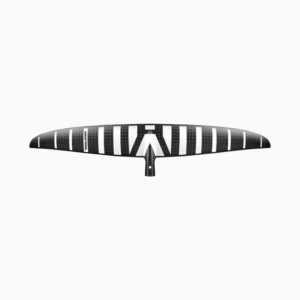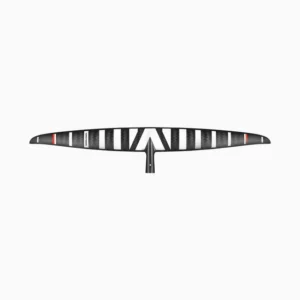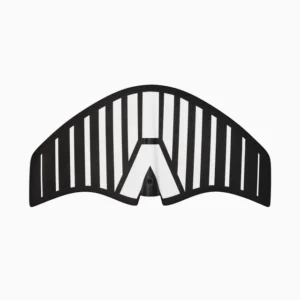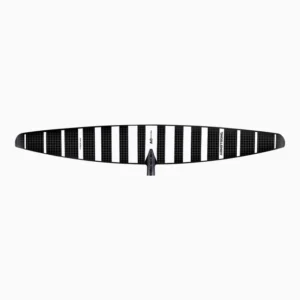MA Mk II Front Wing
€470.00 – €600.00
Description
MA Mk II Front Wing Foil: Ultimate Precision in Hydrofoil Performance
Elevate Every Ride with Next-Generation Control
For riders who demand nothing less than excellence, the MA Mk II Front Wing delivers a unique blend of balance, control, and versatility. Whether you’re carving glassy surf, chasing wind swell offshore, or foiling flatwater lakes, this front wing was engineered to redefine performance in every condition.
Moreover, this isn’t just an upgrade—it’s a complete evolution of the high-aspect foil experience. With refined outlines, optimized profiles, and a lift-to-drag ratio that feels supernatural underfoot, the MA Mk II Front Wing offers a new frontier in feel, flow, and freedom.
Why the MA Mk II Front Wing Foil Stands Apart
A Quantum Leap in Design
At the heart of Armstrong’s innovation lies this truth: performance must always meet precision. Therefore, the MA Mk II Front Wing doesn’t just improve on its predecessor—it changes the game entirely. Crafted using aerospace-grade carbon construction, this foil is stiff, responsive, and shaped to adapt instantly to your body’s input.
Furthermore, Armstrong’s team focused relentlessly on the flow state of a rider. That’s why the MA Mk II profile allows for earlier lift, higher efficiency through turns, and exceptional glide—without compromising agility. Even in gusty or turbulent waters, this foil remains composed, intuitive, and ultra-fast. MA Mk II Front Wing
Perfect for Every Discipline
From wing foiling to prone surf and SUP foiling, the Armstrong MA Mk II Front Wing Foil transitions across disciplines with ease. Its geometry was modeled through computational fluid dynamics (CFD), then honed in real-world testing over hundreds of sessions. As a result, you get:MA Mk II Front Wing
-
Swift pump return for dock starts or downwind linking
-
Graceful carving arcs that remain steady through acceleration
-
Excellent stall resistance and low-speed control
Thus, whether you’re just breaking into foiling or you’re chasing podium finishes, this front wing will exceed expectations.MA Mk II Front Wing
Precision Hydrodynamics Meet Unmatched Durability
Refined Outline and Profile
The redesigned wing shape brings greater torsional stiffness and refined flex response. So, you benefit from tighter feedback loops between rider input and foil action. As water speeds shift, the MA Mk II maintains lift symmetry, giving you full trust in unpredictable environments.
Additionally, a slightly narrower chord and updated leading edge contour help maintain laminar flow longer. You’ll notice it immediately—smoother acceleration, faster glide, and a seamless transition between pumping and carving.

Techno
Carbon Construction You Can Count On
Armstrong’s commitment to materials is legendary. That’s why the MA Mk II Front Wing Foil uses:
-
High-modulus carbon with directional layup
-
CNC-machined cores for consistent foil section thickness
-
Ultra-lightweight yet impact-resistant bonding
Every square inch is designed to withstand repeated pressure cycles, flex torque, and UV exposure without warping or performance loss. Because when you’re flying, dependability isn’t optional—it’s everything.
Designed for Riders, by Riders
Input from the World’s Best Foilers
Behind the MA Mk II is a team of elite riders, engineers, and designers who live for the foil. Their firsthand feedback during testing led to vital adjustments in twist profiles, tip sweep, and drag reduction. Ultimately, this means you get a product that responds like it’s reading your mind—because it was shaped by those who know the feeling best.

Adaptable to Your Setup
Another key advantage? The MA Mk II’s modular mounting system. It integrates seamlessly with Armstrong’s existing fuselage and mast lineups. Therefore, upgrading your foil won’t force you to reinvest in every component. Just bolt, ride, and fly.
Performance That Scales With You
Whether you’re an intermediate learning tight transitions or an advanced foiler linking endless glides, this wing scales alongside your growth. Because of its progressive lift profile, it offers stability in slower speeds and explosive response as you increase tempo.
Therefore, the Armstrong Foil MA Mk II Front Wing Foil becomes a long-term investment—one that grows with your confidence and skill.
Key Features at a Glance
-
✅ Precision-Tuned Hydrodynamic Design – CFD-tested and real-world refined
-
✅ High Modulus Carbon Construction – Durable, lightweight, and responsive
-
✅ Wide Application Compatibility – Wing, SUP, surf, and downwind foil disciplines
-
✅ Modular Mounting System – Futureproof your setup without extra costs
-
✅ Early Lift with Superior Glide – Carves smoothly and pumps effortlessly
-
✅ Performance Stability – Equally forgiving and fierce
Final Thoughts: The Pinnacle of Wing Foil Innovation
Ultimately, the Armstrong Foil MA Mk II Front Wing Foil was made for those who crave more—more glide, more control, and more flight time. From novice dreamers to seasoned chargers, this foil doesn’t just meet expectations—it smashes them. So if you’re serious about elevating your riding experience, it’s time to unlock the most advanced front foil in Armstrong’s lineup.
Armstrong Foil MA Mk II Front Wing Foil: Performance & Design Breakdown
Where Performance Becomes Instinct
Although many foils promise to transform your ride, few actually do. The Armstrong Foil MA Mk II Front Wing Foil, however, redefines what high-performance means on the water. Every element—its camber, thickness, aspect ratio, and edge contours—was obsessively tested and tuned. Consequently, what you get is not just a foil that performs—it becomes an extension of your instincts.
This part explores exactly how that transformation occurs, and why it remains unmatched in today’s foiling landscape.
Flight Characteristics: Balanced, Predictable, Fierce
Early Lift, Instant Feedback
From your very first pump, the MA Mk II lets you feel the foil’s eagerness. Lift engages with minimal effort, thanks to a fine-tuned entry curve on the leading edge. Although many foils require aggressive body mechanics to launch, this one rewards subtle input.
In fact, pilots report noticeable low-speed lift with smoother takeoffs and gentler touchdowns. That’s not by accident—it’s the result of refined geometry that maximizes pressure distribution across the span.
Moreover, transition moments (such as lift-off and touchdown) happen cleanly. There’s little turbulence, no sketchy snap-up behavior. So beginners gain confidence, and advanced riders gain precision.
Glide Efficiency Meets Control
As you accelerate, the wing transitions into a gliding machine. With its mid-to-high aspect ratio and lower drag profile, it slices through water like a race foil—yet remains controllable in chop. In crosswinds or swell stacks, you can maintain a neutral stance without fighting pitch or yaw.
Because glide happens with less resistance, longer runs become possible without energy drain. And since that glide doesn’t sacrifice turning ability, you can snap into carves at any point.
Design Innovations: Form Meets Function
Updated Aspect Ratio and Span
The Armstrong MA Mk II Front Wing Foil balances high-aspect performance with real-world usability. While a pure race foil might extend span for maximum efficiency, this wing moderates that reach to retain carving responsiveness. The result? A sweet spot that combines extended glide with unmatched maneuverability.
Furthermore, the reduced chord length (relative to its span) improves flow reattachment during aggressive angles of attack. That means sharper turns without ventilation, even when pushing hard through powered-down conditions.
Thinned Profile, Torsional Strength
One of the standout improvements lies in its profile thickness. Armstrong reduced the foil’s camber just enough to reduce drag, without compromising structural integrity.
In addition, internal layup refinements increased torsional rigidity. This has a huge impact: during power transfers (like deep carves or high-speed pumps), the foil doesn’t twist unexpectedly. Instead, energy moves cleanly from rider to foil and back again.
Consequently, you feel everything. That is, every micro adjustment, every lean, every tweak—translates instantly to foil response.
Hydrodynamic Brilliance: Built to Flow
Leading Edge and Tip Refinement
To enhance water flow and reduce cavitation, Armstrong reshaped the MA Mk II’s leading edge. This subtle tweak results in:
-
Smoother laminar flow across various speeds
-
Lower drag during transitions between pumping and gliding
-
Increased predictability during high-load turns
Additionally, the tip shapes were redesigned for improved wingtip vortex control. Thus, you gain tighter carves without wingtip stalls or dropouts.
Lift Distribution and Stability
Lift across the span of this wing is remarkably even. Many foils over-deliver at the center and taper out, but Armstrong created a flatter lift envelope. As a result, roll behavior stays consistent during turns.
Furthermore, pitch stability improves under variable foil loads—ideal for conditions with chop, current, or gusty wind. That’s how the MA Mk II gives such a composed feel while retaining peak agility.
Speed & Acceleration: Tuned for Flow
Smooth Power Onset kite armstrong
Rather than delivering power in surges, the MA Mk II offers smooth acceleration across the range. Whether you’re paddling, towing, or using wing propulsion, you’ll feel the speed build progressively.
Even better, that speed doesn’t come at the cost of control. You can push into higher velocities without feeling like the foil wants to lift out. This allows for tighter control during transitions, tacks, and jibes—even at race speeds.
Responsive Deceleration and Recovery
When conditions change or you cut speed intentionally, the foil decelerates with control. It doesn’t nosedive or breach. Instead, its gentle lift taper allows you to reestablish glide quickly, which is critical during swell linkups or dock start sessions.
Rider Responsiveness: A Reflex in Motion
Intuitive Feedback Loop
It’s not just about performance—it’s about feel. And here’s where the Armstrong MA Mk II truly shines.
Thanks to its tuned flex pattern and reduced profile drag, the foil “talks” to the rider. That is, you don’t need to over-correct or fight against resistance. Each movement, no matter how small, leads to a direct and proportionate response from the foil.
Moreover, this allows experienced foilers to focus on flow—not corrections.
Neutral Pitch, Active Roll
The MA Mk II offers a uniquely stable pitch axis. Therefore, you’ll find that forward and back movement is easier to control. However, the roll axis remains agile, giving riders the ability to bank, carve, and sweep through transitions smoothly.
This characteristic matters most when conditions get complex—when swell meets sidewind, or when pump sequences demand split-second correction.
Perfecting the Design Equation
As you’ve seen, the Armstrong Foil MA Mk II Front Wing Foil is not just a piece of gear—it’s a precisely engineered interface between rider and environment. Every contour, every tweak, every gram serves a purpose.
It’s why this wing doesn’t simply fly—it flows.
Armstrong Foil MA Mk II Front Wing Foil: Use Cases and Rider Profiles
A Front Wing That Moves Across Disciplines
The MA Mk II Front Wing was not built for one kind of rider. Instead, it was engineered to thrive across multiple styles, water conditions, and energy sources. Therefore, its hydrodynamic versatility becomes a major advantage. Whether you’re flying a wing, catching waves, chasing bumps downwind, or pushing dock start endurance, this foil adapts without compromise.MA Mk II Front Wing
Let’s explore how it fits each discipline and how it supports different levels of rider progression.
1. Wing Foiling: Balanced Lift and Glide for Freeride Freedom
For wing foilers, the MA Mk II delivers exceptional glide with minimal effort. You don’t need to constantly pump or overpower the wing—just cruise and let the foil do its work. Because the lift engages early and evenly, light-wind days become more rewarding. Even when the breeze drops, the MA Mk II carries forward through glide transitionsMA Mk II Front Wing beautifully.
Additionally, the wing’s consistent roll stability enhances confidence while switching feet, riding swell, or transitioning between tacks. Riders who enjoy long sessions in variable wind will especially benefit.MA Mk II Front Wing
✅ Ideal For:
-
Intermediate riders ready to progress past beginner foils
-
Advanced riders seeking control in surf and open water
-
Light-wind cruising or high-efficiency downwinders
2. Prone Foiling: Seamless Takeoff and Effortless Connection
Prone surfers will appreciate how early the MA Mk II lifts. Because of the efficient entry profile and tip shape, you’ll catch more waves with less paddle effort. More importantly, once you’re up, the foil links sections with ease. So connecting multiple peaks becomes less about muscle and more about timing and flow.
Furthermore, turns feel tighter and more responsive. As a result, carving becomes expressive, dynamic, and intuitive—even during slower-speed sections.
✅ Ideal For:
-
Surf foilers chasing open-face wave connection
-
Carve-oriented foilers who enjoy smooth, arching lines
-
Riders looking for better return speed between sets
3. Downwind SUP Foiling: Endless Glide and Flow Control
Downwind specialists will find the MA Mk II to be a trustworthy tool for linking energy efficiently. Because the foil’s span supports extended glide and its camber provides generous lift, even moderate bumps become rideable. Riders who pump from swell to swell will notice its incredible acceleration return, especially in flatter water.
Also, since it balances pitch and roll effectively, you’ll be able to maintain trim even in confused seas. In downwinders, that kind of stability pays off with longer flight time and reduced energy drain.
✅ Ideal For:
-
Open ocean explorers and flatwater linkers
-
SUP foil enthusiasts chasing wind-generated swells
-
Distance-focused foilers seeking long-range glide
4. Dock Starts and Pump Foiling: Elastic Return, Light Takeoff
Dock start athletes and pump foil riders often need a wing that can rebound quickly while conserving rider effort. The MA Mk II’s flex profile and lift curve support fast recovery and smoother cadence. In particular, it allows for longer flight sequences without needing constant full-body exertion.MA Mk II Front Wing
Furthermore, once airborne, the glide efficiency keeps the foil flying with reduced foot pressure. As a result, it becomes easier to string together freestyle moves, link docks, or maintain rhythm around buoys.MA Mk II Front Wing
✅ Ideal For:
-
Dock start learners ready for low stall speeds
-
Endurance pump riders chasing personal records
-
Crossover athletes blending flatwater and swell sessions
Sizing Guide: Matching Rider Goals with Foil Sizes
armstrong downwind board typically offers the MA Mk II Front Wing Foil in multiple sizes (e.g., 850, 1050, 1250, 1550), allowing you to tailor your ride. Since rider weight, style, and wind conditions vary, matching the right wing size to your setup is crucial.
| Size | Best For | Ideal Rider Weight | Use Case Highlights |
|---|---|---|---|
| 850 | High-speed wing & prone surf | Under 80kg | Carving & tight turns |
| 1050 | All-around performance | 70–90kg | Wing + downwind + prone |
| 1250 | Glide-focused freeride | 80–100kg | SUP + pump + light wind |
| 1550 | Max lift and early takeoff | 90kg+ | Dock starts + low wind |
These are rough guidelines. Riders on the lighter or heavier side of the range may benefit from adjacent sizes depending on foil technique and terrain.armstrong foil board
Skill Level Suitability: From New Flyers to Elite Chargers
Beginner to Intermediate
Although the MA Mk II is a high-performance tool, it remains accessible. Riders transitioning off will find its stability and early lift inviting. Even more, the predictable stall behavior and neutral pitch help shorten the learning curve.
For progression-focused riders, the MA Mk II enables faster learning in advanced maneuvers—carving, pumping, switch stances—without adding instability.
Advanced to Professional
Meanwhile, elite riders unlock the MA Mk II’s full potential at speed. Its optimized laminar flow allows fast acceleration without loss of control. Whether you’re threading swell or racing through complex transitions, this wing reacts cleanly and rapidly.MA Mk II Front Wing
Additionally, professionals report better power delivery during high-torque maneuvers—making it suitable for freestyle, race, and high-energy surf.MA Mk II Front Wing

armstrong foils Rider Personas: Who Rides the MA Mk II?
To illustrate the diversity of use, here are a few rider archetypes who thrive with the MA Mk II:
-
The Downwind Dreamer – Loves 20km coastal glides and linking energy endlessly.
-
The Power Carver – Lives for dynamic turns, fluid arcs, and expressive riding.
-
The Progression Junkie – Just graduated from beginner gear and wants an upgrade.
-
The All-Condition Explorer – Foils in anything, anywhere—from lakes to reef breaks.
-
The Lightweight Freestyler – Prioritizes glide and return during pump sequences.
Armstrong MA Mk II Front Wing Foil – Materials & Construction Overview
| Component | Material/Technology | Function & Benefit | Design Purpose |
|---|---|---|---|
| Foil Wing Core | CNC-Machined Closed-Cell Core | Ensures uniform foil thickness and precision shaping | Delivers symmetrical lift and exact flex control across span |
| Outer Shell | High-Modulus Carbon Fiber Laminate | Provides ultra-high stiffness with minimal weight | Increases energy transfer efficiency while enhancing rigidity |
| Resin System | UV-Stabilized Epoxy Blend | Improves resistance to sun damage, saltwater corrosion, and temperature variation | Guarantees long-term structural integrity even in extreme environments |
| Tip Reinforcement | Multi-Directional Carbon Layering | Strengthens wing tips against impact and torsional twisting | Reduces vulnerability to dings and edge delamination |
| Internal Bonding | Aerospace-Grade Structural Adhesives | Binds core to outer laminate layers for maximum cohesion | Prevents micro-separation and internal weakness under flex and load |
| Leading Edge Tapering | Gradual Profile Transition with Rounded Edge | Reduces drag, improves water reattachment, and enhances entry speed control | Ensures clean flow dynamics for earlier lift and higher pump efficiency |
| Trailing Edge Stiffener | High-Density Foam + Carbon Matrix | Adds stiffness where flex can compromise glide | Enables sharper acceleration release without flutter |
| Surface Finish | Matte Anti-Vortex Coating | Diminishes micro-turbulence and vortex shedding | Increases laminar flow while boosting lift-to-drag ratio |
| Foil Connection Box | Titanium-Reinforced T-Nut System | Corrosion-proof under saltwater, highly torque-resistant | Delivers rigid mounting with zero slop or wiggle over time |
| Carbon Layup Strategy | Directional + Bi-Axial Fiber Orientation | Customizes stiffness across span vs chord | Allows controlled flex in turns, while maintaining pump drive in straight lines |
| Wing Profile | Moderate Aspect Ratio + Progressive Camber | Balances glide with turning ability | Provides a forgiving yet responsive ride for multiple disciplines |
| Construction Method | Hand-Laminated + Pressure-Cured | Maximizes material adhesion and reduces resin pooling | Guarantees structural consistency and minimized weight variability |
| Weight (Average 1050 size) | Approx. 970 grams (varies by size) | Lightweight without compromising structural integrity | Keeps swing weight low while preserving stiffness |
| Environmental Resistance | Saltwater, UV, Impact, Flex Fatigue | Designed to withstand repetitive strain and natural exposure | Ensures performance doesn’t degrade over seasons |
| Sustainability Factors | Minimal Waste Offcut Policy + Solvent-Free Curing | Environmentally conscious production approach | Aligns with modern eco-responsibility goals without sacrificing performance |
Additional information
| Size | 490cm2, 590cm2, 690cm2, 790cm2, 890cm2, 990cm2, 1190cm2, 1390cm2 |
|---|








Reviews
There are no reviews yet.